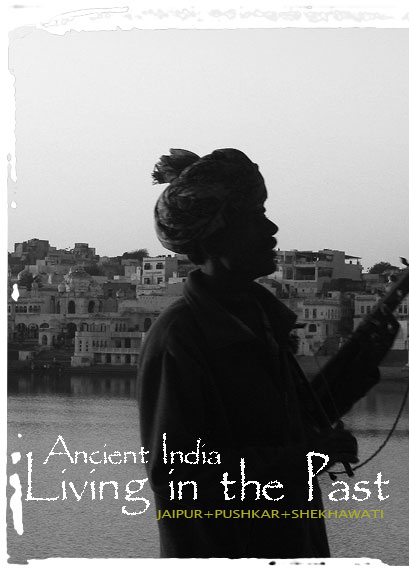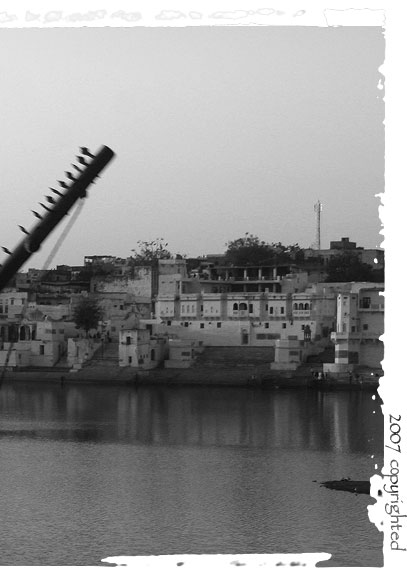| |
|
Nothing
in India is in its complete form, everything is half done - tar roads
are half paved, rubbish half cleaned, water piping half built, houses
always in construction mode and motorways never reach the final stage.
Perhaps it is the Indian's belief in 'the whole is greater than the
sum of its parts'. If you are architecture savvy, this is what the
industry always refers to as the 'Deconstruction Movement'. The word
Deconstruction, as powerful as it may sound, is its own worst enemy.
Construction necessarily involves destruction, but Deconstruction
is the provocation to destruction, as early as during its construction
phase. Everything must be, or at least looks as if it is new and destroyed
at the same time and in the same space. Indian cities truly live up
to this philosophy; the juxtaposition of old and new in the same living
dimension. Under the dilapidated cover, Indians continue to live happily
amidst ruins and dusts. Is it true that Morphosis, a great philosopher
of the Deconstruction Movement, found inspiration from the natural
deconstruction of Indian cities? The Indian cities, I must say, are
where the old and new collide - the new Indian today is like living
in the past.
|
Jaipur
A charming pink city that offers you a spectacular walk-in-the-past
experience. The dust choked air, crowded bazaars and colorful spice
markets, deafening vehicle honks, almost-falling-apart city fort
and the pink furnished walls guarantee you an ancient flavour in
Jaipur. After days of backpacking around Rajasthan, I almost couldn't
distinct Jaipur from Jodhpur. Both cities became so identical that
only the city colors could tell them apart - Jaipur has the romantic
pink whereas Jodhpur has the serene blue.
Pushkar
A miniature version of Varanasi without the burning ghat. I guess
I am not the first who had a rather disappointing stay in this small
city surrounding a holy lake. Some hostile locals simply go overboard
when it comes to extorting money from the tourists. I couldn't find
a moment of peace at all during my stay in this so-called 'the most
beautiful and peaceful holy lake city in India'. I will save my
story here, as I believe there are tons of similar unpleasant stories
out there on the web. Quoting an old friend of mine, 'holiness shines
most desirably where human decadence is prevalent'. Certain people
hide behind religiosity, but the more they flash their religions,
the more it shows their hopeless decadence.
Shekhawati
It wasn't in my original plan to visit this place, but it certainly
turned out to be one of my favorite travel spots in India. Shekhawati,
a significantly huge area in Rajasthan that is rich in intricately
painted mansions called havelis. Don't take my word lightly, the
havelis with their grandeur and rich artistic frescoes had once
brought glory into northern India's architectural culture, particularly
in Rajasthan. Sad to say that the havelis are not well preserved
and the new Indian generation forgot about their existence. It took
me, my friend and our Indian driver tremendous effort to find our
way to a few havelis in Shekhawati. Finally with God's help we bumped
into Biyani Haveli in Sikar. The owner generously opened his door
and proudly showed us around. After a cup of milk tea and sweets
served by his wife, he asked for some money. I generously bestowed
the old couple a token sum. This is at least a friendly albeit intentional
service offered by the locals, unlike the rather bad experience
in the holy Varanasi and Pushkar. If you are in India next time,
Shekhawati, a rather humble and not so publicized area, is certainly
a place you don't want to miss.
|
|

